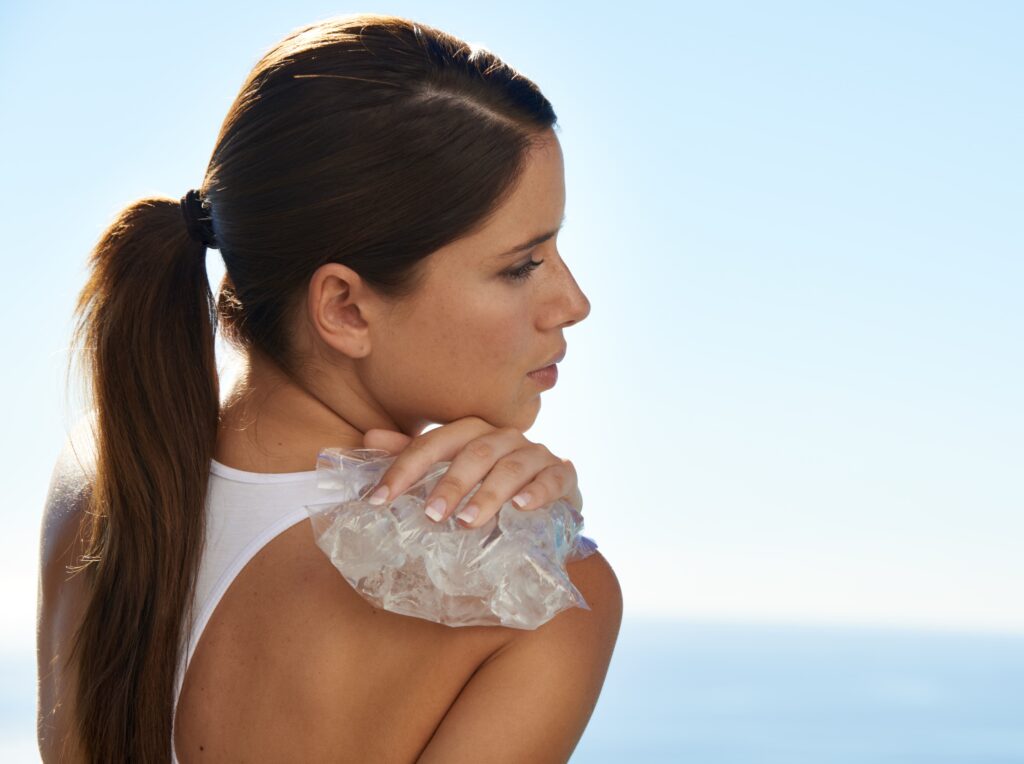Schedule An Appointment With Us
Are Your Symptoms Affecting Your Quality Of Life?
Consult our MOH-accredited orthopaedic specialist for an accurate diagnosis & personalised treatment plan today.

MBBS (S’PORE)
MRCS (Ireland)
MMed (Ortho)
FRCSEd (Ortho)

Shoulder tendinitis and impingement are conditions that affect the shoulder joint, causing pain and restricted movement. Shoulder tendinitis refers to the inflammation of the tendons in the shoulder, particularly those in the rotator cuff and bicep. It is often associated with overuse and repetitive activities, leading to irritation and swelling of the tendons.
Shoulder impingement syndrome, on the other hand, occurs when the rotator cuff tendons are trapped and compressed during shoulder movements. This compression can lead to irritation and injury of the tendons and bursa (a small fluid-filled sac that provides cushioning between bones and tendons) in the shoulder.
These conditions can co-exist as shoulder impingement can lead to tendinitis, and prolonged tendinitis can increase the risk of impingement. Both conditions are common in individuals who engage in activities that involve repetitive overhead motions, such as painting, lifting, swimming, or certain sports.
The causes of shoulder tendinitis and impingement are often multifactorial, involving a combination of anatomical, physiological, and activity-related factors.
The symptoms of shoulder tendinitis and impingement are crucial for early diagnosis and effective management of these conditions. Initially, symptoms may occur only during activities but can progress to being present at rest if the condition is not treated.
Schedule An Appointment With Us
Consult our MOH-accredited orthopaedic specialist for an accurate diagnosis & personalised treatment plan today.
Diagnosing shoulder tendinitis and impingement involves a combination of clinical evaluation and diagnostic tests.
The majority of cases of shoulder tendinitis and impingement can be effectively managed with non-surgical treatments. These aim to reduce pain, decrease inflammation, and improve shoulder function.


Surgical intervention for shoulder tendinitis and impingement is considered when non-surgical treatments are ineffective or in cases of severe structural damage.

MBBS (S’pore)
MRCS (Ireland)
MMed (Ortho)
FRCSEd (Ortho)
Dr Kau (许医生) is a Fellowship trained Orthopaedic Surgeon with a subspecialty interest in Hip and Knee surgery and has been in practice for more than 15 years.
He is experienced in trauma and fracture management, sports injuries, and joint replacement surgery.
Implementing prevention strategies is key to reducing the risk of developing shoulder tendinitis and impingement.
For Singaporeans, Singapore Permanent Residents and Foreigners.
Please speak to our friendly clinic staff about using your insurance plans.

If you have any enquiry, please do get in touch. Leave us a message and we will get back to you shortly.
Shoulder tendinitis refers to inflammation of the tendons, primarily in the rotator cuff and bicep, often due to overuse or repetitive motion. Impingement syndrome occurs when these tendons are compressed during shoulder movements, leading to irritation and inflammation. Tendinitis can lead to impingement and vice versa, but they have distinct mechanisms.
With appropriate treatment, many individuals can achieve significant relief from symptoms. Complete recovery is possible, especially when the condition is diagnosed and treated early. However, in some chronic or severe cases, ongoing management may be necessary.
Shoulder tendinitis and impingement typically present with pain in the front of the shoulder, often worsening with overhead activities. A distinctive feature of impingement is the painful arc experienced when lifting the arm. Consultation with an orthopaedic surgeon is important for accurate diagnosis, as symptoms can overlap with other shoulder conditions.
Ignoring these conditions can lead to worsening pain, decreased range of motion, and potential progression to more serious issues such as rotator cuff tears. Chronic pain and functional limitations can also occur if left untreated.